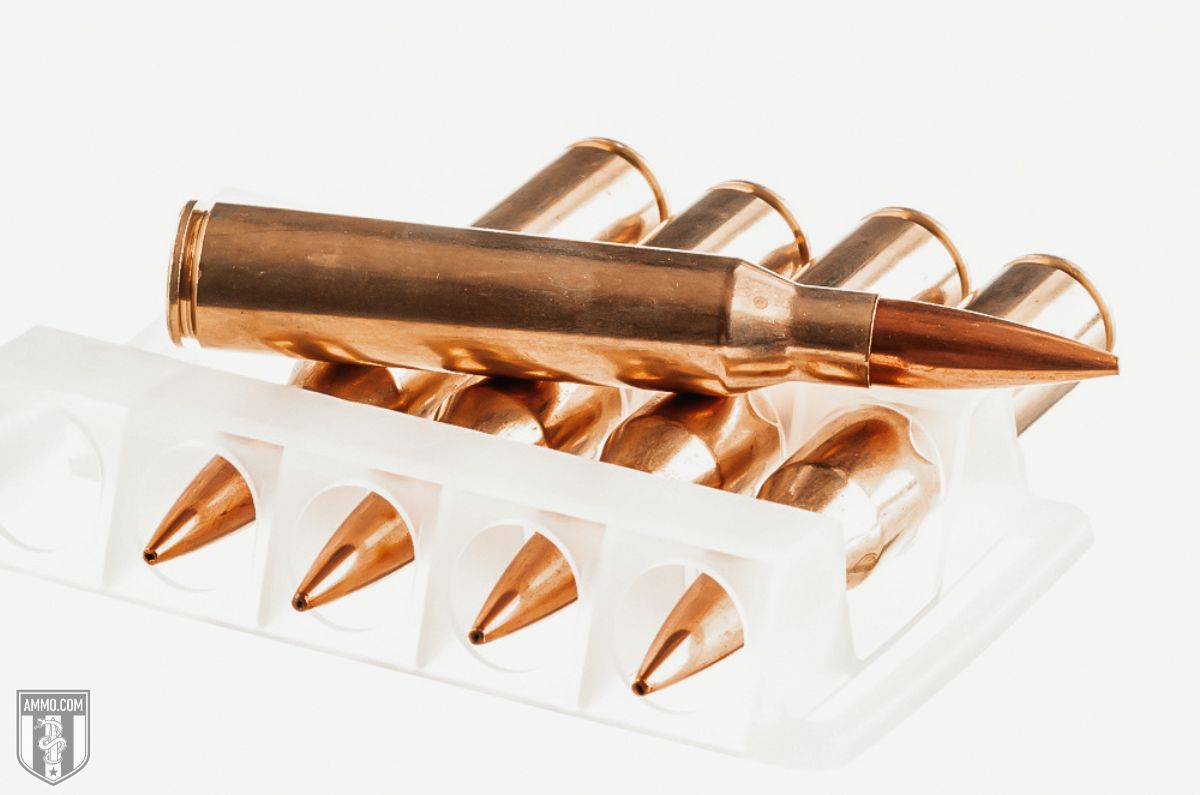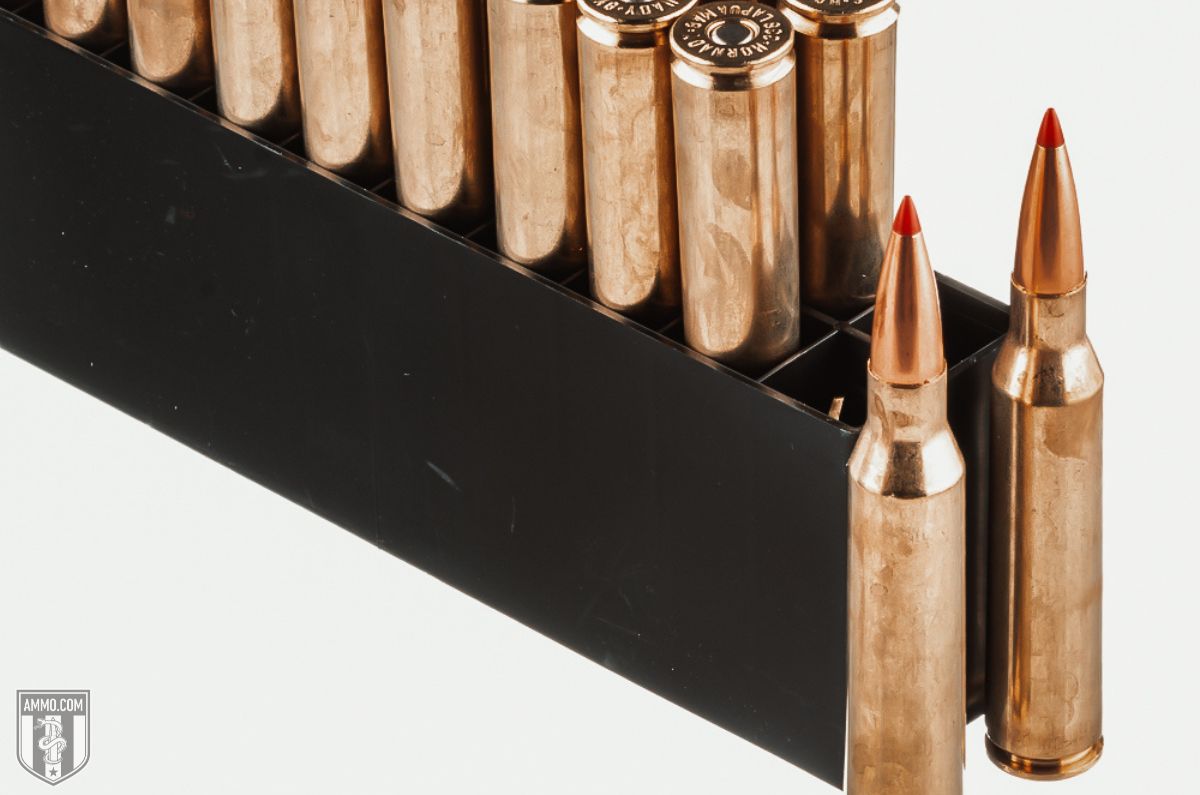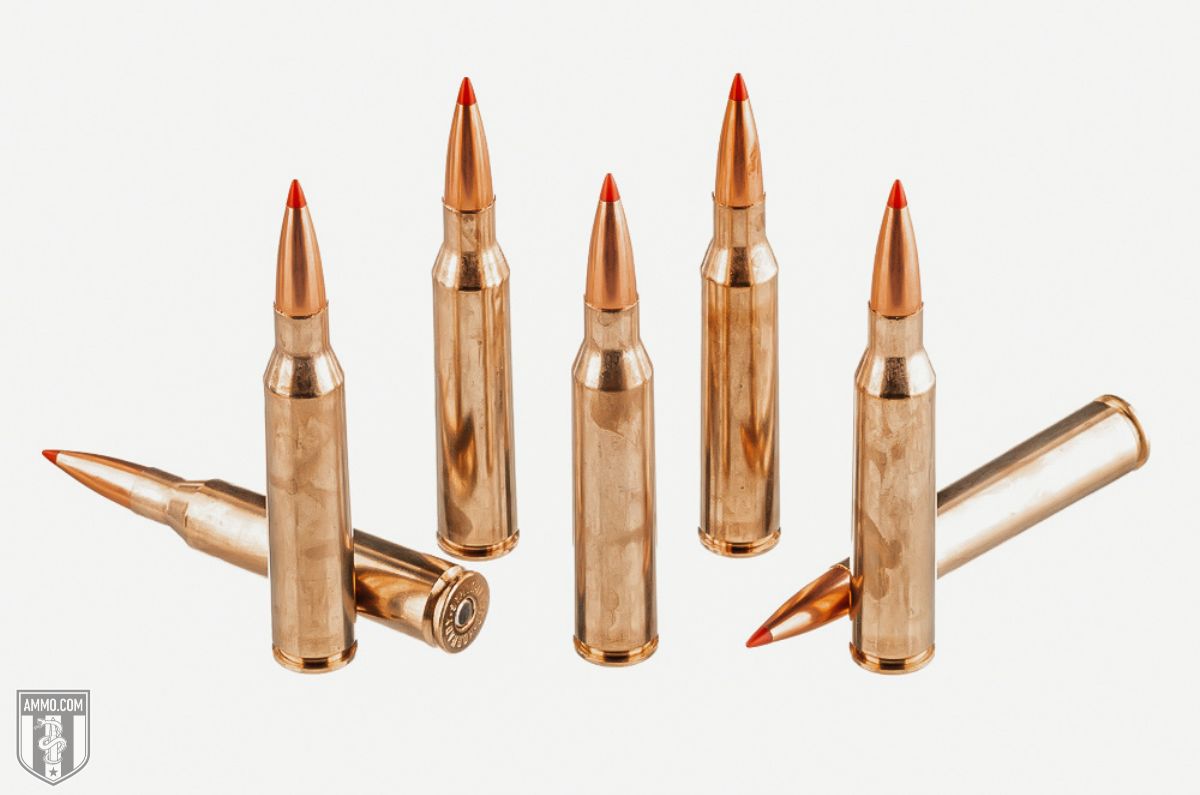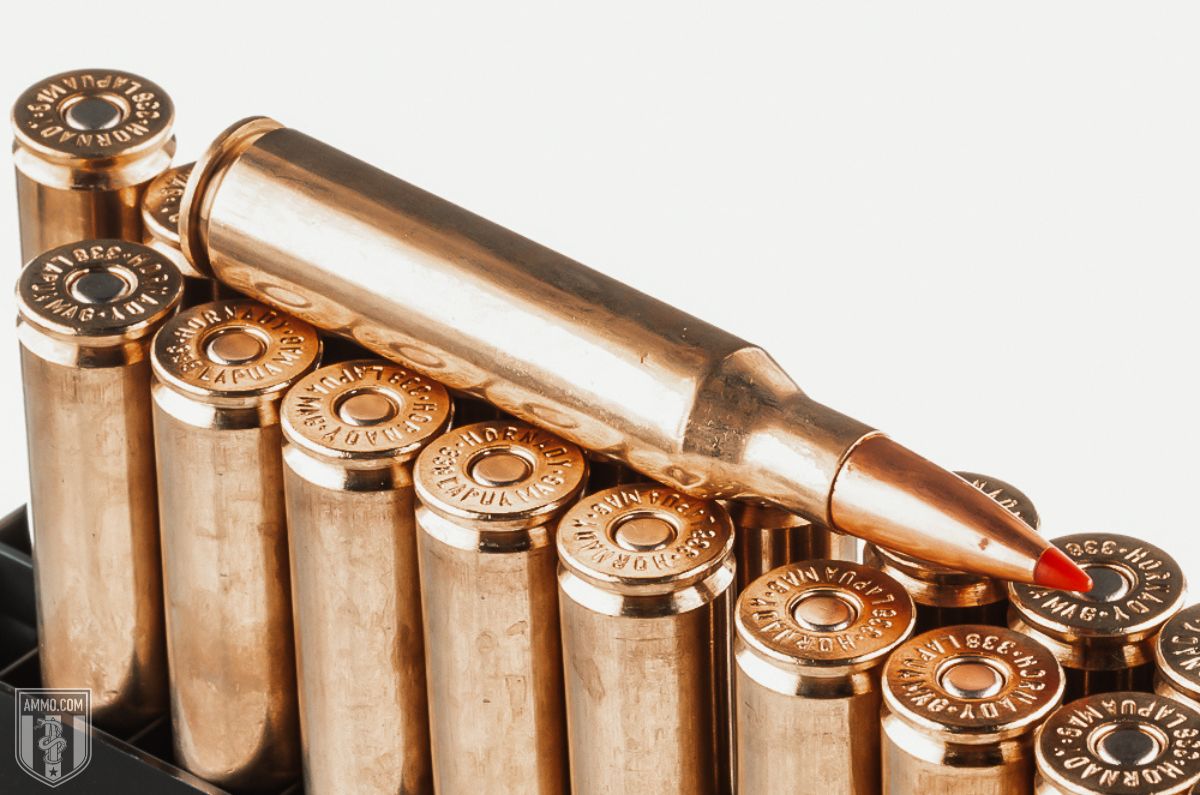300 Norma vs 338 Lapua: Master of the Mile
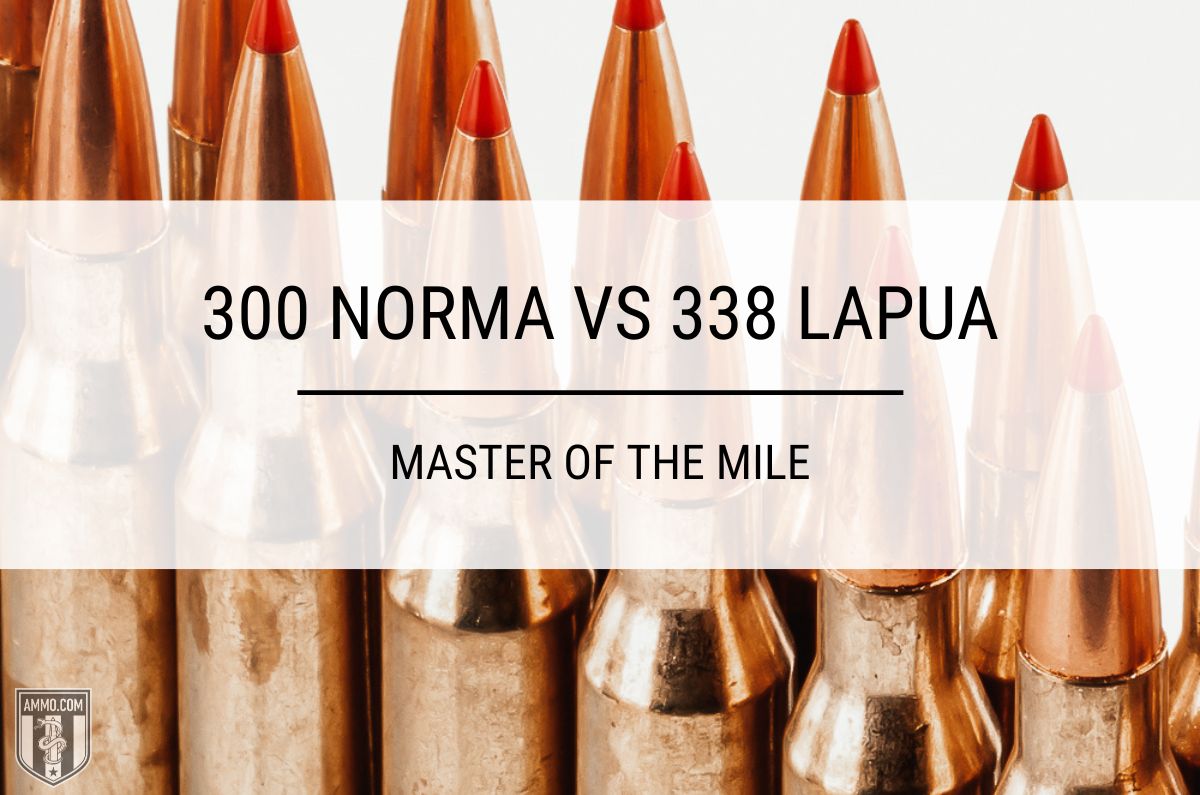
The new kid on the block vs the tried and true long-distance caliber. Since its introduction, the 300 Norma Magnum cartridge has received a lot of hype for being the new best long-range round, but how does it fair against a battle-tested caliber like the 338 Lapua?
We've compared the 300 Norma vs 338 Lapua in 11 categories to determine the master of the mile shot.
While not all the comparisons are perfectly equal, we strive to make them as similar as possible.
Keep scrolling to see if there's a new master of the mile!
300 Norma vs 338 Lapua
When we compare these cartridges, we'll notice some striking similarities and differences.
While both calibers are extremely capable of long-range shooting in expert hands, we're here to determine which one is the best for the average person.
Let's begin with the rifle cartridge specs of each caliber.
Cartridge Specs
You'll first notice that the 338 Lapua is slightly larger in all aspects.
The 300 Norma Mag has a bullet diameter of .308" while the more extensive 338 Lapua shoots a bullet with a diameter of .338".
Since the 300 NM shoots a smaller projectile, the neck diameter also needs to be smaller.
The 300 NM neck diameter is 0.342 inches, while the 338 Lapua is 0.372 inches.
The base diameter of the cartridge is one area where only a minute difference exists between the two calibers. The 300 Norma has a base diameter of 0.585 in, and the 338 Lapua is 0.587 in.

The 300 Norma has a case length of 2.492", and the 338 Lapua comes in at 2.724".
The overall length of the shorter 300 NM is 3.618", while the slightly longer 338 Lapua is 3.681".
Because it doesn't fire as heavy of bullets, the 300 Norma doesn't need as much case capacity; however, it still has 104.2 gr H2O. The 338 Lapua has a case capacity of 114.2 gr H2O.
The maximum pressure (SAMMI) for the 300 NM is 63,817 psi, but the max pressure for the 338 Lapua is around 60,000 psi.
Does the larger Lapua have an advantage in shooting performance in real-world scenarios?
Let's find out!
Recoil: 338 Lapua vs 300 Norma
Recoil is the energy a shooter feels when they pull the trigger of a firearm.
Several factors determine felt recoil, such as gun weight, the shooter, and bullet weight.
We need to consider the recoil because many shooters prefer less recoil. That's why you'll see muzzle brakes on a precision rifle to reduce the recoil as much as possible without sacrificing the bullet's effectiveness.
A rifle with lower recoil is easier to handle and be more accurate with; it's also more enjoyable to shoot because you don't have a sore shoulder after a few rounds down range.
Most 300 NM rifles weigh seven or eight pounds, while a 338 Lapua Magnum Barrett MRAD weighs 14.5 lbs. So will significantly affect felt recoil.
The 300 Norma Mag recoil energy is about 25.9 ft-lbs. However, that can increase to as much as 35.5 foot-pounds of energy when we increase the bullet's muzzle velocity or weight.
The 338 Lapua has a lot of felt recoil. In fact, most manufacturers install a muzzle brake to help ease the abuse the shooter's shoulder receives.
The 338 Lapua with a 250 grain Nosler Accubond traveling at 2850 fps will punch in at 32 ft-lbs.
The winner is easily the 300 Norma because of its reduced amount of recoil.
Barrel Life
There is plenty of disagreement regarding barrel life or how many rounds a barrel can handle before downrange accuracy declines.
Precision shooters meticulously track barrel life. The most significant factor affecting barrel life is the ammo's powder charge.
A higher powder charge shortens the barrel life.
Magnum cartridges are tough on barrels. Although the high case capacity is great for getting excellent muzzle energy and velocity, it also erodes the rifling at the chamber throat much faster.
When reloading close to max pressure, your barrel won't last as long as someone loading lower powder charges.
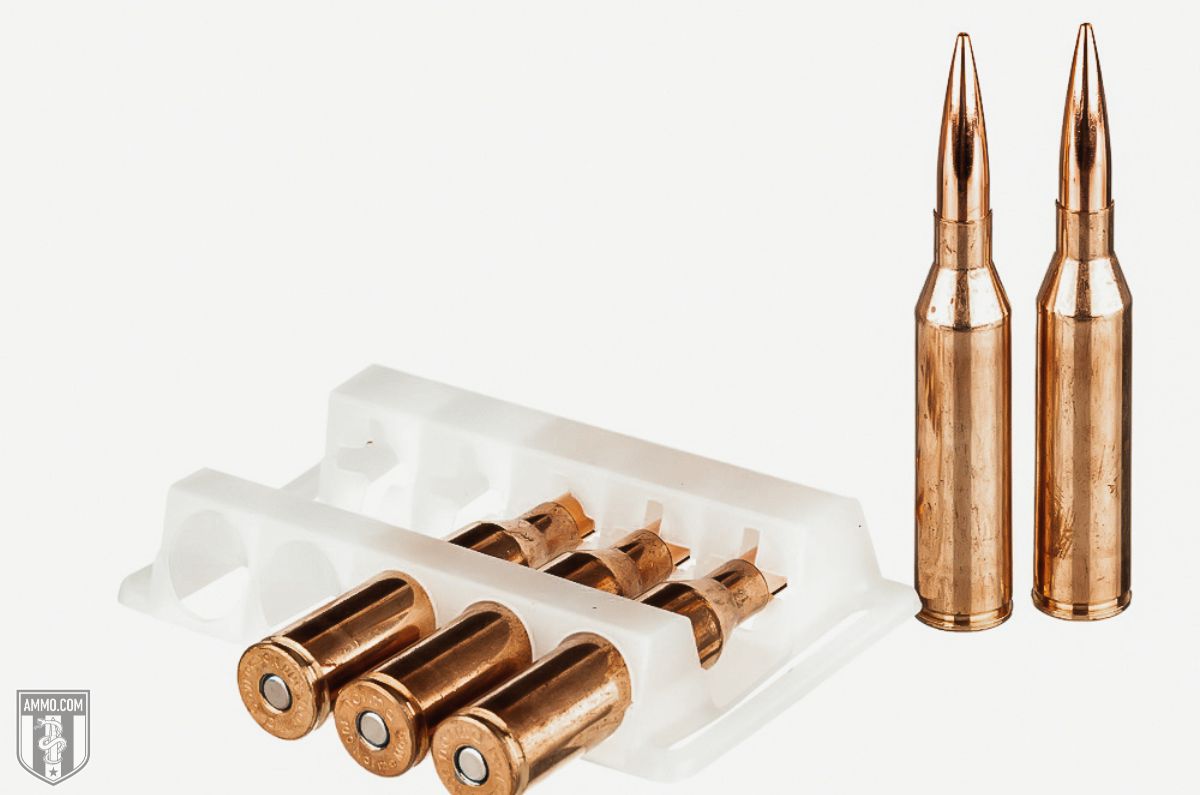
For hunters, it's doubtful you'll ever shoot enough rounds to negatively affect the barrel's rifling.
A 300 Norma Magnum barrel will maintain peak accuracy between 1100 to 1200 rounds. Because of the increased powder charge, you can expect fewer rounds from the 338 Lapua.
That's tough to swallow, considering the average 300 Win Mag barrel will last 2500 to 2000 rounds.
The real winner is the barrel manufacturers, but for the article's sake, the 300 Norma wins.
Trajectory: 300 Norma Mag vs 338 Lapua Mag
The trajectory is the bullet's path to the target. It's an arch due to gravity. Shooters prefer a flat shooting round because the flatter the trajectory, the easier it is to be accurate at long distances since you don't have to compensate for as much bullet drop.
Both calibers have a flat trajectory because they are designed for long-range shooting purposes, but which is the flattest?
The 215 Berger 300 Norma Mag drops 54.7" at 600 yards. At 1,500 yards, it will have 610.5" of bullet drop.
The 230gr Berger 300 Norma has a drop of -22.4 MOA at 1,000 yards.
At 500 yards, the 338 Lapua has -40" of bullet drop, and at 1,000 yards, the 338 Lapua dropped -211".
The 250gr Berger 338 Lapua has a drop of -23.7 MOA at 1,000 yards.
The heavy bullet of the 338 Lapua brings it back to earth quicker than the 300 Norma.
The 300 Norma has a slightly flatter trajectory.
Accuracy
Accuracy is a fickle concept because many factors determine the accuracy of a round. The gun, recoil, trajectory, and shooter are the primary ones we will consider.
For the sake of argument, let's say we found nearly identical guns capable of accurately shooting the rounds, and we used the same shooter.
That means recoil and trajectory would be the two most significant contributing factors.
Judging solely by which caliber has less recoil and a flatter trajectory, the 300 NM will be the most accurate.
I'm not saying the 338 Lapua isn't accurate because it is one of the most accurate rounds in history. It's just at a disadvantage when pitted against the 300 NM.
The 300 Norma wins this section.
Ballistic Coefficient: 300 NM vs 338 Lapua
The ballistic coefficient (BC) measures how well a bullet fights the wind.
It's a measure of the aerodynamics of a bullet. A high BC is preferred because the bullet will resist wind drift better.
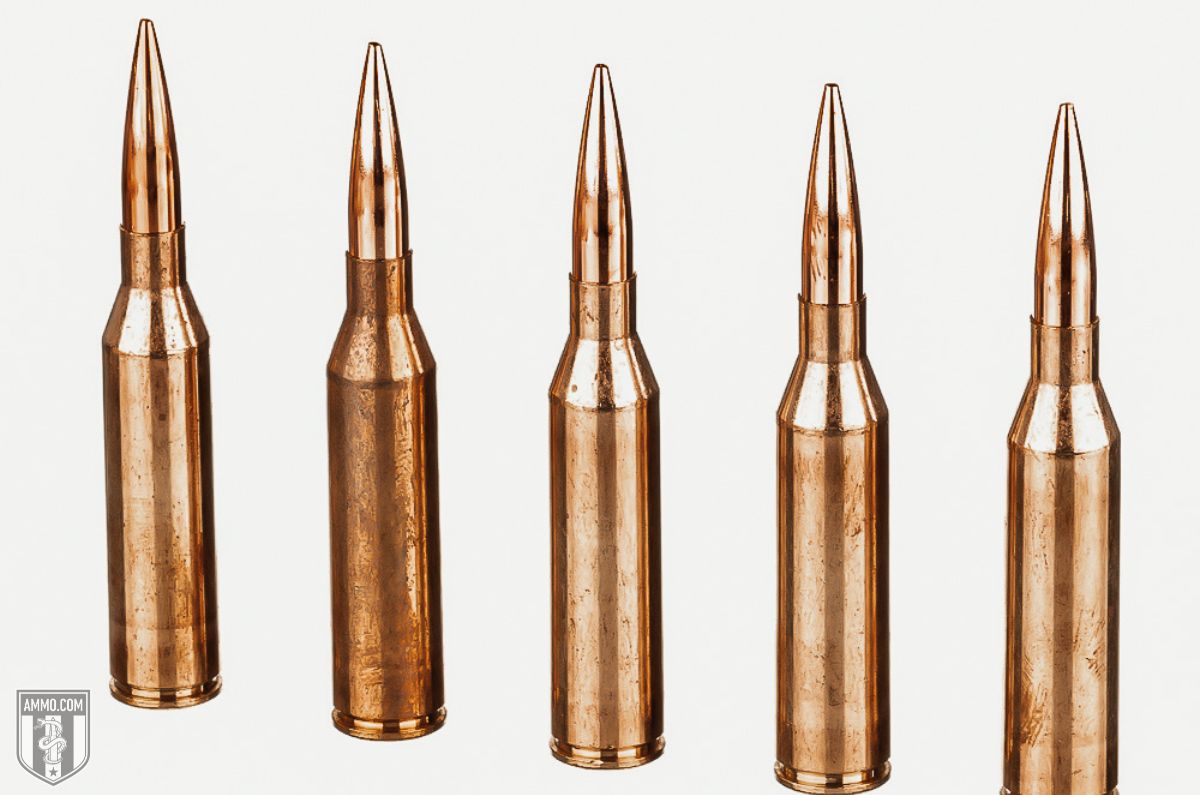
Generally, a heavier bullet will have a higher BC because it takes more force to move the heavier bullet off of its path.
A 300 Norma Mag 230gr Berger Hybrid bullet has a ballistic coefficient of 0.743.
Because the 338 Lapua fires heavier projectiles than the 300 NM, it will have a higher BC. A 300 grain Nosler Custom Competition 338 Lapua round has a BC of 0.8
The two primary loads for the 300 PRC (another long-range caliber) are the 212-grain ELD-X with a BC of 0.663 and the 225 gr ELD match with a BC of 0.777. So the Lapua's high BC is an incredible feat thanks to its heavier bullet.
The 338 Lapua is on the board; it wins this section.
Stopping Power
The sectional density (SD) measures the ability of a bullet to penetrate a target. This is extremely important when hunting big game because you need a bullet that can puncture through thick hide, bone, and sinew to have an ethical kill.
Sectional density is partly calculated by comparing the bullet diameter and the bullet weight. The higher the SD, the better the bullet penetrates the target.
Some would argue that stopping power doesn't matter with a well-placed shot.
I would agree, to a point. However, not all shots are well-placed because, in hunting situations, the conditions are rarely perfect. So having a bullet with more stopping power is critical in those circumstances.
The winner is the 338 Lapua because of its heavier bullets; it will have a higher sectional density.
Hunting: 300 Norma Magnum vs 338 Lapua
While neither of these calibers was designed with hunting in mind, they can be used for big game hunting for animals like elk, moose, bear, and caribou.
However, there are much better options if you plan only to hunt with the rifle. The 300 Win Mag is a much better choice for hunting.
Both these calibers are extremely expensive to shoot, and the guns are costly, so carrying it through the woods where the potential to scratch it is increased doesn't sound like a good idea to me.
This section is a draw because both rounds are capable of hunting a wide variety of big game animals, but neither is ideal.
Home Defense
Because these firearms were intended for long-range shooting, it makes them a poor choice as a home defense weapon.
Instead, I recommend using a shotgun like a 12 ga or 20 ga or a semi-auto pistol chambered in 45 ACP or 9mm.
The reason these rifles are poor home defense weapons is that they're bolt-action rifles, and they're prone to overpenetration.
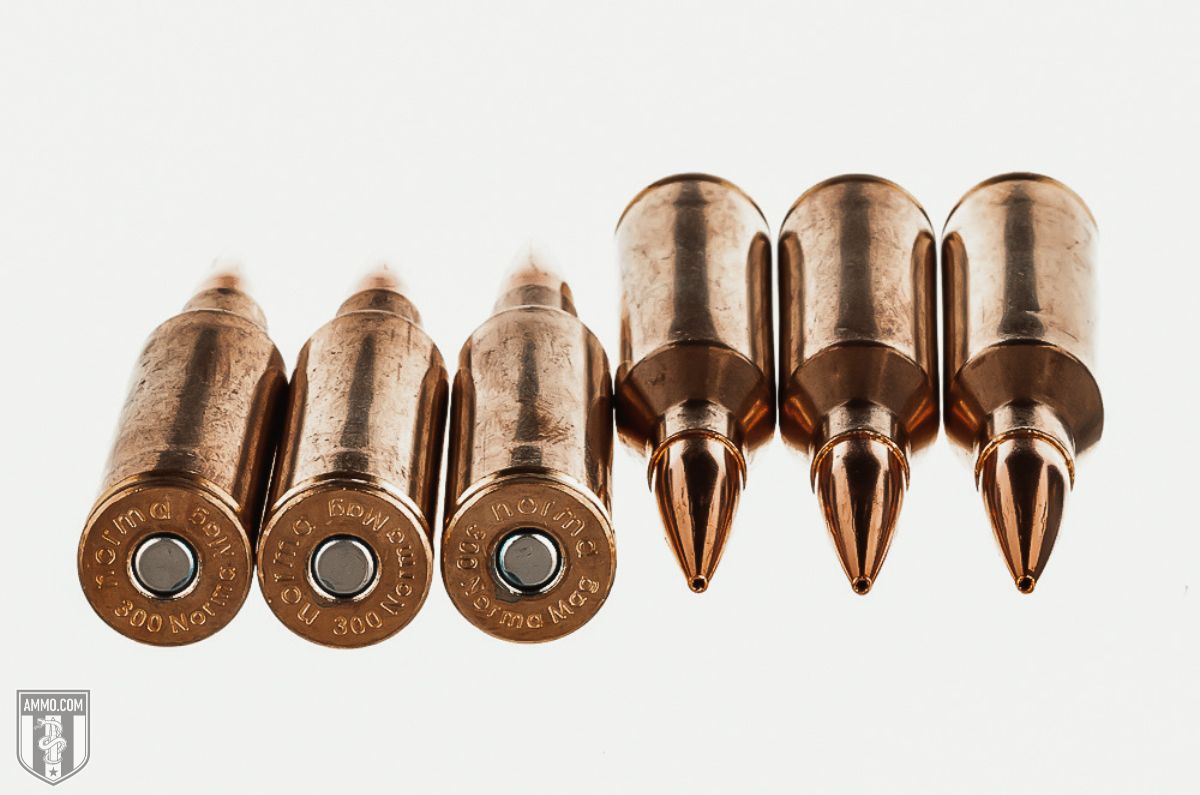
Overpenetration puts your family and neighbors at risk because the bullet can travel through multiple walls before it stops. Since we can't see what's behind the wall, it's best not to risk it; unless it's your only option.
The only time I would use a long-range rifle for self-defense is if it's the only firearm I had available, or a zombie horde is approaching from a distance.
This section is a tie.
Ammo Cost & Availability: 338 Lapua vs 300 NM
Long-range target shooting is an expensive hobby. High-quality, competitive rifles cost thousands of dollars, and factory ammo is incredibly high-priced, which is one reason why most competitive shooters handload.
Because both rounds are specialized, not as many manufacturers, make ammo for these calibers, which drives the price up and the availability down.
The leading ammo manufacturers for the 300 Norma are Berger, Federal, and Norma Ammunition.
One round of Berger Match Grade Ammunition 300 Norma Magnum 215 Grain Hybrid Target will cost you $6.00 if you can find it.
For the 338 Lapua, expect to pay around $5 per round for cheap ammo and $9 per round for hunting and match-grade ammo.
The Hornady Precision Hunter 338 Lapua Magnum 270 Grain ELD-X Ammunition costs $6.50 per round at the time of this writing.
Major manufacturers like Hornady, Federal, Remington, and Nosler make ammo for the 338 Lapua.
This category is a toss-up because 300 Norma is typically cheaper; however, it's much harder to find.
Rifle Cost & Availability
This is another category that gives spouses of long-distance shooters nightmares.
Most 300 NM rifles are custom built, skyrocketing the price from hundreds to thousands of dollars.
Barrett Firearms and Christensen Arms are the two primary firearms manufacturers making rifles chambered in 300 NM.
A new rifle will cost anywhere from $2,700 for a Christensen Arms BA Tactical to $5,000 for a Barrett MRAD to $15,500 for a Barrett MK22.
I'm afraid it doesn't get any better for the 338 Lapua.
You'll be hard-pressed to find a 338 Lapua rifle for less than $2000.
The 338 Lapua requires reinforcement in the action to handle the increased pressures and recoil that the cartridge produces. This means more material and increases the cost.
Few manufacturers offer rifles in 338 Lapua. The most common makers are Barrett, Accuracy International, GA Precision, Ruger, and Savage.
This section is a tie because no matter which one you choose, you'll be spending thousands of dollars on a rifle.
Reloading: 300 Norma vs 338 Lapua Magnum
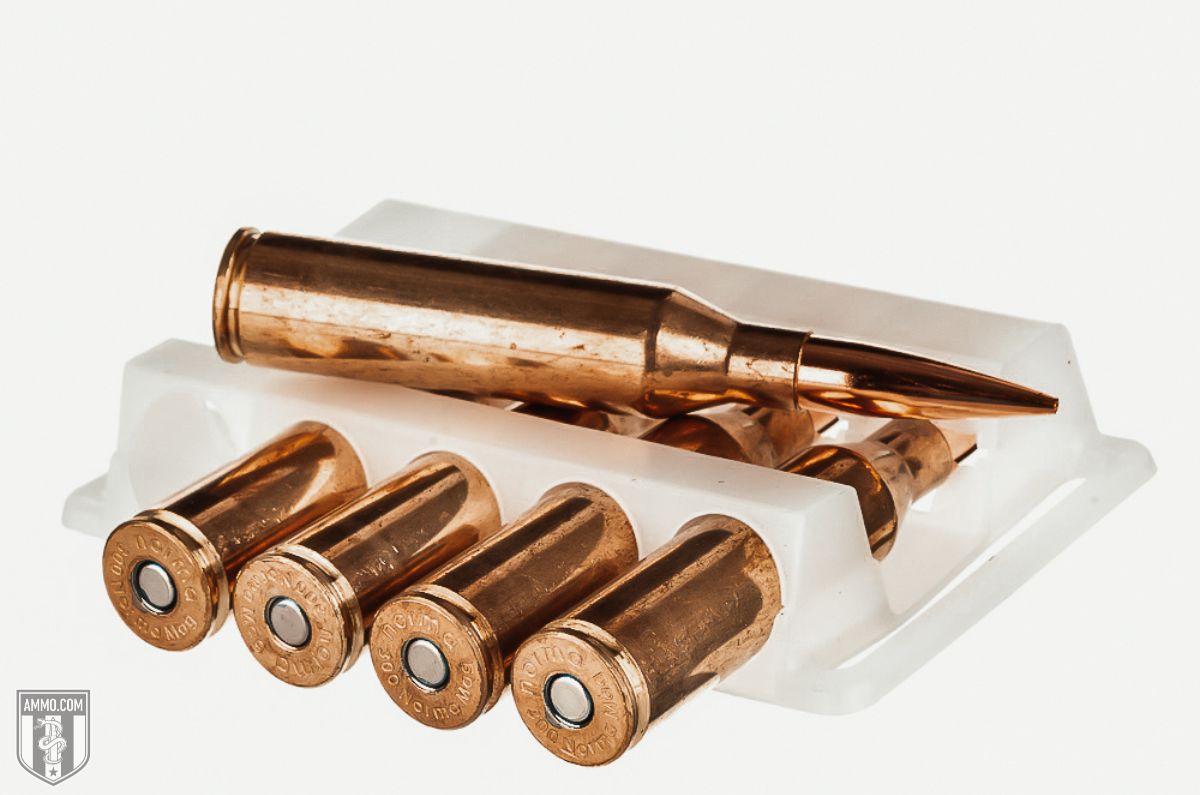
Reloading is a way to save money and get better results than factory ammo.
Even if you buy 338 Lapua ammo in bulk, you can save money by reloading the brass once you've used it.
Handloading is the best way to control the variables within your ability to control; this is why precision shooters always prefer handloading their ammo over factory ammo.
They need to be able to replicate the same shot multiple times consistently, and the best way to do this is to fire ammo loaded the exact same.
The 300 NM and 338 Lapua are both reloadable, meaning you can find the equipment and supplies you need to reload them.
This last section is a tie because Lapua brass, norma brass, and all the other reloading supplies are available for purchase.
338 Lapua Ballistics
Note: This information comes from the manufacturer and is for informational purposes only. The actual ballistics obtained with your firearm can vary considerably from the advertised ballistics. Also, ballistics can vary from lot to lot with the same brand and type load.
| 338 Lapua Magnum Bullet WEIGHT | Muzzle VELOCITY (fps) | Muzzle ENERGY (ft. lbs.) | TRAJECTORY (in.) | |||||||||||
|---|---|---|---|---|---|---|---|---|---|---|---|---|---|---|
| Muzzle | 100 yds. | 200 yds. | 300 yds. | 400 yds. | Muzzle | 100 yds. | 200 yds. | 300 yds. | 400 yds. | 100 yds. | 200 yds. | 300 yds. | 400 yds. | |
| 250 Grain | 2900 | 2685 | 2481 | 2285 | 2098 | 4668 | 4002 | 2416 | 2899 | 2444 | 1.7 | 0 | -7.3 | -21.3 |
| 250 Grain | 2963 | 2795 | 2640 | 2493 | n/a | 4842 | 4341 | 3881 | 3458 | n/a | 1.9 | 0 | -7.9 | 0 |
| 250 Grain Match | 2900 | 2760 | 2625 | 2494 | 2366 | 4668 | 4229 | 3825 | 3452 | 3108 | 1.5 | 0 | -6.6 | -18.8 |
| 285 Grain | 2745 | 2616 | 2491 | 2369 | 2251 | 4768 | 4331 | 3926 | 3552 | 3206 | 1.8 | 0 | -7.4 | -21 |
| 285 Grain Match | 2745 | 2623 | 2504 | 2388 | 2275 | 4768 | 4352 | 3966 | 3608 | 3275 | 1.8 | 0 | -7.3 | -20.8 |
| 300 Grain | 2660 | 2544 | 2432 | 2322 | n/a | 4715 | 4313 | 3940 | 3592 | n/a | 1.9 | 0 | -7.8 | n/a |
300 Norma History
The 300 Norma Magnum is a relatively new cartridge since it was released in 2012 by Norma Ammunition. Its parent cartridge is the .338 Norma Magnum (a wildcat cartridge of the 338 Lapua Magnum) necked down to accept .30 caliber bullets, which explains why they're similar in many ways.
It quickly gained popularity in competitive shooting circles as a top contender long-distance rifle.
The United States Special Operations Command (SOCOM) chose the MK22 Advanced Sniper Rifle chambered in .300 Norma Magnum as one of their primary sniper rifles.
With the ballistics it produces and the backing of the US Military, this caliber is here to stay for many years.
338 Lapua History
Research Armament Industries (RAI) started the development of the 338 Lapua Mag in 1983. They wanted to create a cartridge that fit the gap between the 300 Winchester Magnum and the 50 BMG.
At first, they tried to use the 416 Rigby as the parent case by necking it down to accept 250-grain bullets from Hornady. However, the 416 Rigby case was not strong enough to handle the needed pressures to reach the ballistic goals of the round.
By 1984, RAI was under pressure from the military to finish the round, and in desperation, they reached out to Lapua, the Finnish ammo company, for assistance. RAI had to drop out of the program because they had too much debt. So Lapua engineers held the fate of the new cartridge.
The ballistics team at Lapua joined forces with Sako and Accuracy International to redesign the 416/338 case to handle 60,000 psi.
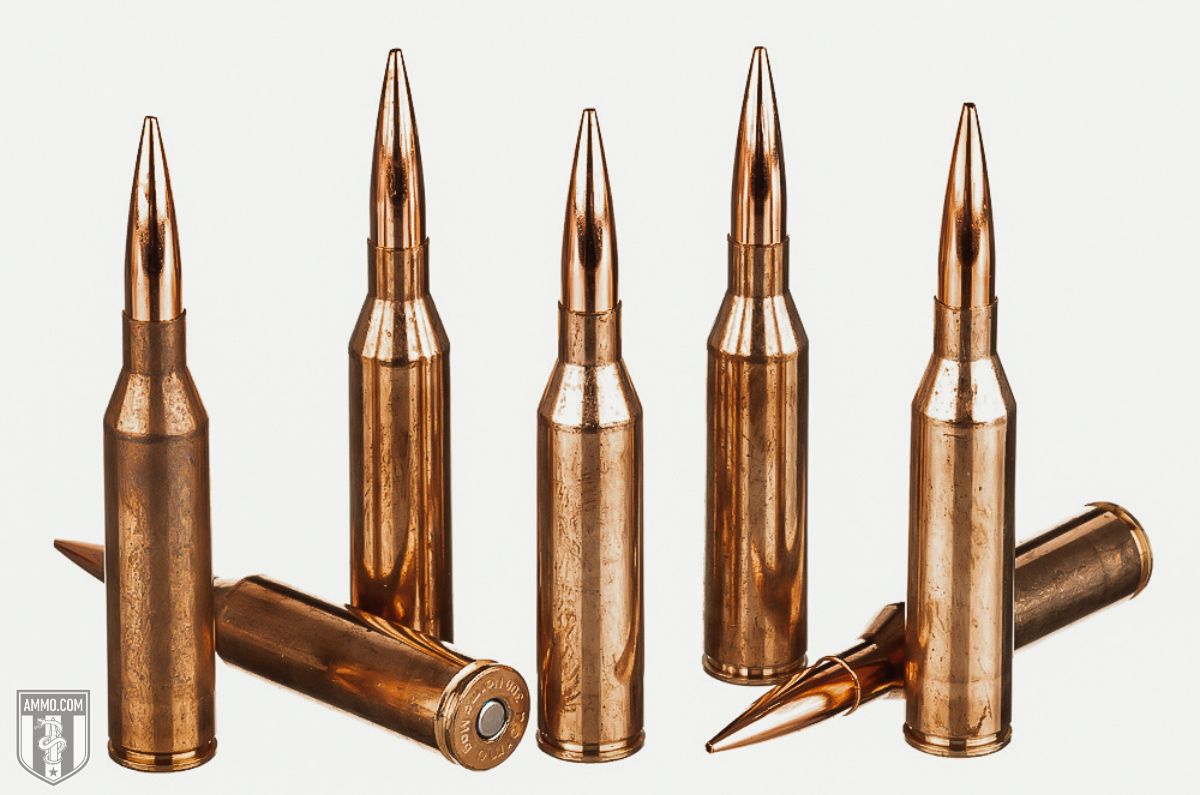
The final case design achieved velocities just short of the initial 3,000 fps goal while maintaining the needed pressure resistance. The decision was made to use the new LockBase B408 FMJ instead of the Hornady bullet.
In 1989 the 338 Lapua Magnum cartridge was accepted by the CIP (the European version of SAAMI); it became a NATO cartridge shortly later.
The 338 Lapua Mag is a powerful round that will hold its own against the 50 BMG for years.
Parting Shots
When we compared the 300 Norma vs 338 Lapua, the 300 Norma won 4/11 categories while the 338 Lapua only won 2/11 categories. The rest of the categories were a draw.
Before you rush out and buy a 300 Norma, the 338 Lapua barely lost most of the categories, and it mainly boiled down to having more kick than the 300 Norma.
If you can handle the extra kick, the 338 Lapua is an excellent choice.
If you prefer to have a little less recoil, the 300 Norma mag is the caliber for you.
Ammo Comparisons
- .308 vs 5.56
- 6.5 Creedmoor vs .308
- .300 Blackout vs .308
- .300 Win Mag vs .308
- .243 vs .308
- .308 vs .30-06
- 7mm-08 vs .308
- .270 vs .308
- 7.62x39 vs .308
- .223 vs .308
- .338 Lapua vs .308
- .380 ACP vs 9mm
- .223 vs 5.56
- .300 Blackout vs 5.56
- 9mm vs 45 ACP
- 9mm vs 40 S&W
- .357 SIG vs 9mm
- 10mm vs 9mm
- 9mm vs 9mm Luger
- .243 vs .270
- .300 Win Mag vs .30-06
- .270 vs .30-06
- .40 vs .45
- 38 Special vs 357
- 9mm vs 40 vs 45
- 5.56 vs 7.62x39
- 338 Lapua vs .30-06
- .30-30 vs .30-06
- 300 PRC vs 338 Lapua
- .30-06 vs 7mm
- 300 Win Mag vs 338 Lapua
- 300 PRC vs 300 Win Mag
- 300 WSM vs 300 Win Mag
- 338 Win Mag vs 338 Lapua
- 12 Gauge vs 20 Gauge
- 10mm vs 357 Mag
- .30-30 vs 7.62x39
- 224 Valkyrie vs 22-250
- 17 HMR vs 22 Mag
- 7.62x39 vs .300 Blackout
- 45 ACP vs 45 Auto
- 45-70 vs 30-30
- 300 Blackout vs 223
- 357 Magnum vs 9mm
- 350 Legend vs 300 Blackout
- 224 Valkyrie vs 223
- 45 ACP vs 38 Super
- 6.5 Grendel vs .308
- 17 HMR vs 22 LR
- 10 Gauge vs 12 Gauge
- 22-250 vs 223
- 45 Colt vs 45 ACP
- 350 Legend vs 30-30
- 5.7x28 vs 223
- 5.7 vs 9mm
- 5.56 vs 5.7
- 22 vs 9mm
- Buckshot vs Birdshot
- 450 Bushmaster vs 308
- 450 Bushmaster vs 223
- Buckshot vs Slug
- 6.5 Grendel vs 5.56 vs 223
- 6mm ARC vs 6.5 Grendel
- 44 vs 45
- 458 SOCOM vs 5.56
- 357 vs 44
- 32 ACP vs 380
- 300 Win Mag vs 338 Win Mag vs 338 Lapua Mag
- 450 Bushmaster vs 458 SOCOM vs 50 Beowulf
- 6mm Creedmoor vs 6.5 Creedmoor
- TMJ vs FMJ
- 44 Special Vs 44 Magnum
- 45 90 vs 45 70
- 6.8 Western vs 6.8 SPC
- 50 Beowulf vs 50 BMG
- 26 Nosler vs 6.5 PRC
- 28 Gauge vs 410
- 6.8 SPC vs 5.56
- 6.8 SPC vs 6.5 Grendel
- 6.8 Western vs 7mm Rem Mag vs .28 Nosler
- 6.8 Western vs 6.5 Creedmoor
- 22 Hornet vs 223
- 6.8 Western vs 6.5 PRC
- .410 vs 12 Gauge
- .410 vs 20 Gauge
- 22 LR vs 22 Mag
- 6mm ARC vs 243
- 7mm-08 vs 270
- 243 vs 6.5 Creedmoor
- Nickel vs Brass Casing
- 204 Ruger vs 223
- 50 Beowulf vs 5.56
- 260 Remington vs 6.5 Creedmoor
- 6mm Remington vs 243
- 28 Nosler vs 300 PRC
- 50 Beowulf vs 50 AE
- 22 Nosler vs 22-250
- 450 Marlin vs 45-70
- 300 Win Mag vs 300 Norma
- 458 SOCOM vs 300 Blackout
- 38-55 vs 45-70
- 22 Hornet vs 22 LR
- 300 Norma vs 338 Lapua
- 338 Lapua vs 50 BMG
- 28 Nosler vs 300 Win Mag
- 28 Nosler vs 6.5 Creedmoor
- 204 vs 22-250
- 458 SOCOM vs 45 70
- 44 40 vs 45 70
- 6.8 SPC vs 6.5 Creedmoor
- 450 Bushmaster vs 30-06
- 7mm Rem Mag vs 300 Win Mag
- 30 Carbine vs 223
- 25-06 vs 30-06
- 26 Nosler vs 28 Nosler
- 16ga vs 12ga
- 30 06 vs 7.62 x54R
- 9mm Makarov vs 9mm Luger
- 350 Legend vs 223
- 30 Carbine vs 5.56
- 6.5x55 vs 6.5 Creedmoor
- 6.5 Creedmoor vs 270 vs 25-06
- M193 vs M855
- 450 Bushmaster vs 458 SOCOM
- 6.5 Grendel vs 6.5 Creedmoor
- 350 Legend vs 5.56
- .277 Fury vs 6.8 SPC
- 277 Fury vs 300 Win Mag
- 10mm vs .45 ACP
- 277 Fury vs 223
- 6.8 SPC vs 300 Blackout
- 6.5 PRC vs 6.5 Creedmoor
- 277 Fury vs 308
- 277 Fury vs 6.5 Creedmoor
- 350 Legend vs 450 Bushmaster
- 277 Fury Vs 5.56 NATO
- 10mm vs 40S&W
- 32 ACP vs 9mm
- 32 Special vs 9mm
- 8.6 Blackout vs 300 Blackout
- 30 Super Carry vs. 9mm
- 5.56 vs 9mm
- .50 Action Express vs 9mm
- 7.62x25 vs. 9mm
- 10mm vs 44 Magnum
- 300 Blackout vs 300 Win Mag
- 6.5 Grendel vs 300 Blackout
- 460 Rowland vs 10mm
- 300 RUM vs 300 PRC
- 300 Norma vs 300 PRC
- 45 GAP vs 45 ACP
- 7mm PRC vs 300 Win Mag
- 300 PRC vs 6.5 Creedmoor
- 300 PRC vs 308
- 357 SIG vs 357 Mag
- 7.62x39 vs 7.62x51
- 243 Win vs 223 Rem
- 30 Nosler vs 300 PRC
- 6.5 Creedmoor vs. 30-06 Springfield
- 450 S&W vs. 44 Magnum
- 6.5 Creedmoor vs. 300 Win Mag
- 454 Cassull vs. 45-70 Govt
- 454 Cassull vs. 44 Mag
- 7.62x54r vs. 308 Winchester
- 22 ARC vs. 223 Rem
- Subsonic vs. Supersonic Ammo
